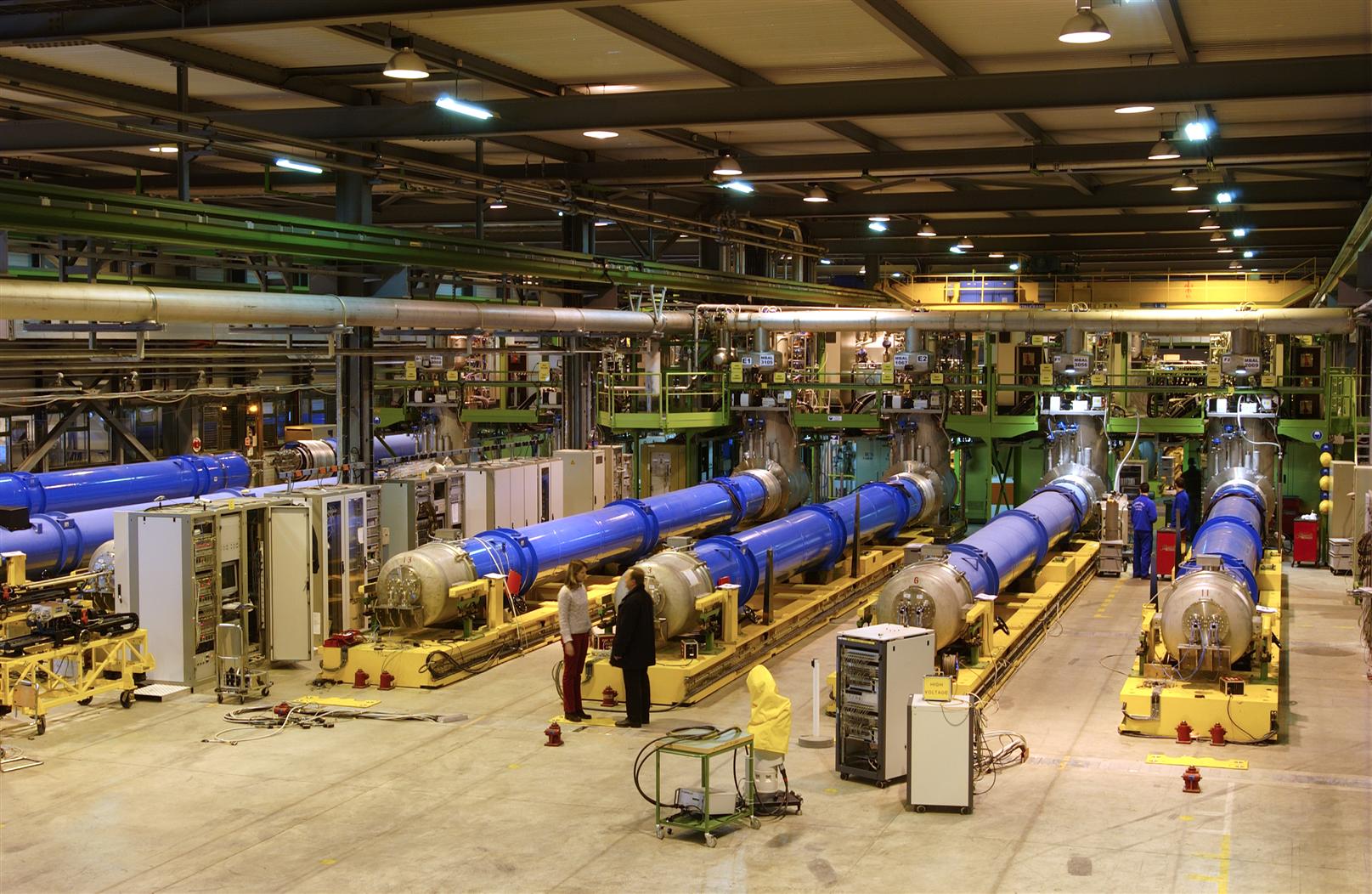2008 LHC Open Days LHC magnets on display
Over the last few years you’ve probably seen many of the 15 m long blue LHC dipole magnets being ferried around the site. Most of them are underground now, but on the LHC Open Days on 5 and 6 April the magnets will also play a central role on the surface.
The 27 km ring of the LHC consists of 1232 double-aperture superconducting dipole magnets, 360 short straight sections (SSS) and 114 special SSS for the insertion regions. On the Open Day, you will be able to "Follow the LHC magnets" through different stages around the site, culminating in their descent into the tunnel.
Discover all the many components that have to be precisely integrated in the magnet casings, and talk to the engineers about the precision measurements they had to carry out before the magnets were cold tested. Inspect the benches where the magnets were tested at their operating temperature, a bare 2 degrees above absolute zero, and see some of the special transport robots used to move the fragile but huge 30 tonne machines. The last stage for both you and the magnets above ground is the the descent pit, a shaft that was created for the express purpose of lowering the 15 m long magnets into the tunnel.
Actually, you might have already seen one or two LHC magnets on the CERN site (e.g. in front of Building 40) or on one of the roundabouts around the ring (e.g. in Crozet or next to Entrance E). Over the next four weeks more than 20 LHC magnets will be displayed on the Meyrin and Prévessin sites, at the access points around the ring and on roundabouts in the surrounding area.
website: http://lhc2008.web.cern.ch/LHC2008/OpenDaysE/cps.html
A superconducting key ring!
As a special souvenir of these two special Open Days you can take home a real piece of the LHC!
800 m of LHC superconducting cable was used to make 20 000 emblematic superconducting key rings that will be on sale in the various sales points on 5 and 6 April. These attractive key rings will feature the superconducting cable with its thousands of filaments inside their copper coating.




